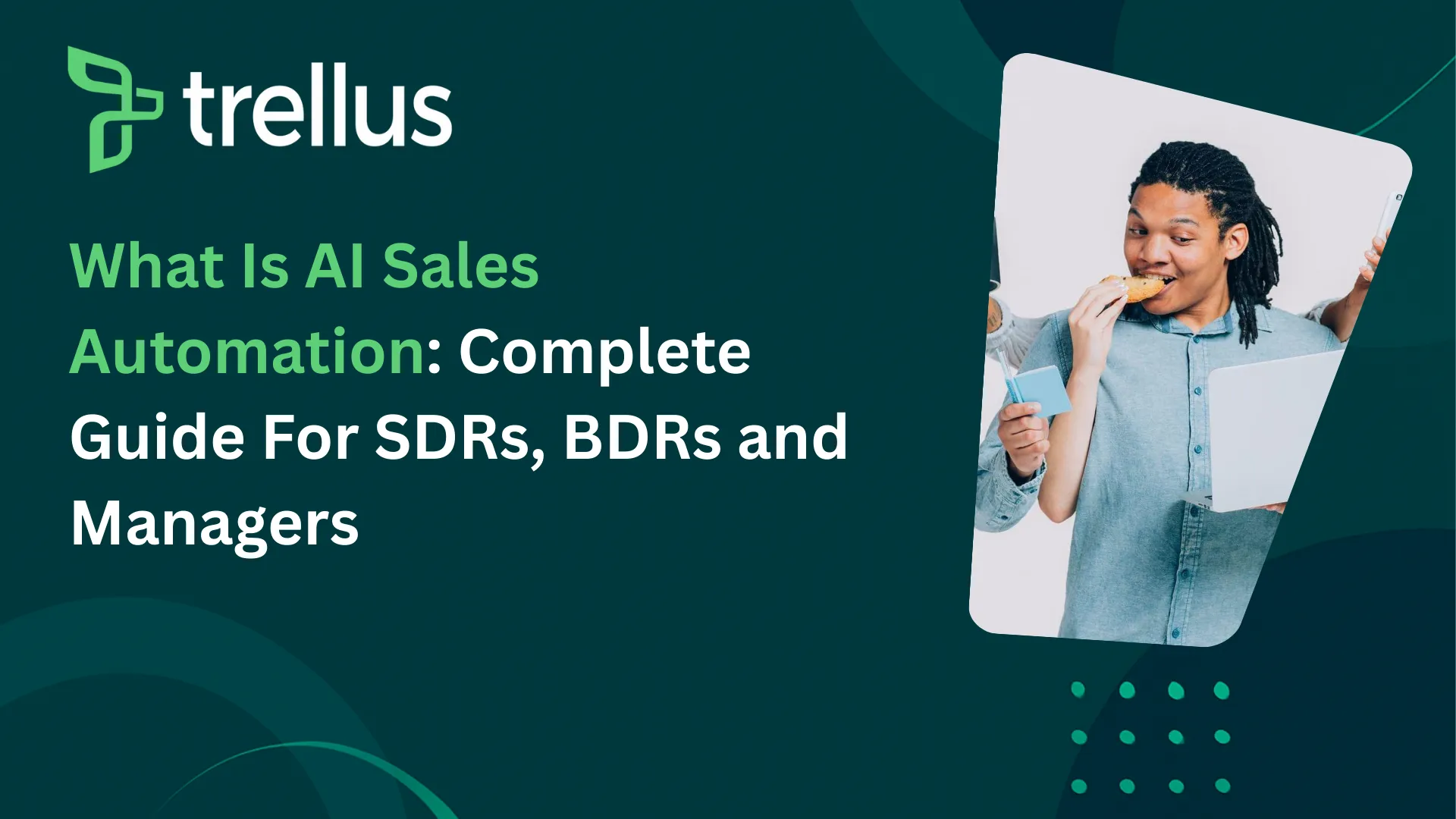
Our Top Picks


What’s The Best Choice For Your Sales Team?
What Is an Auto Dialer?

Aside from the concept of ‘what is auto dialing,’ you also need to be familiar with what exactly an auto dialer is.
Is it a telephone; a piece of hardware that automatically dials numbers for you? Is it a software technology, or vice versa?
Auto dialers, also known as power dialers, automate the process of dialing phone numbers from a list one at a time.
The dialer automatically dials the next number once the previous call is finished, creating a smooth, hands-free experience.
How It Works
With auto dialing, sales reps engage in one-on-one calls, making it easier to maintain high-quality conversations.
After a call ends, the system forwards the rep to the next contact.
As a result, it not only eliminates the time spent looking up the next prospect but also allows the rep to personalize the outreach between calls.
These dialers also handle post-call tasks, such as logging call notes, tagging dispositions, and updating CRM records. Everything happens in the background, saving reps valuable time they can use to have more conversations.
What is Auto Dialing?
Auto Dialing, or power dialing, is a fully automated and hands-free dialing experience. Auto dialers promote higher-quality of conversations by allowing sales reps to single-line dial their prospects one at a time.
The magic happens in between the calls when call notes and dispositions are automatically populated while simultaneously forwarding you to the next prospect in your sequence.
This eliminates the manual work and allows your reps to focus on talking to prospects and personalizing their outreach.
Whether you are strategically calling prospects or blasting through lists at a time, auto-dialing is able to support each workflow and bring you more quality conversations at scale.
Common use case: Mature or young sales organization looking to maximize their conversation output without sacrificing the quality and staying personalized.
What Is a Parallel Dialer?

The Basics of Parallel Dialing
Parallel dialers take efficiency to the next level by allowing sales reps to dial multiple numbers simultaneously.
For instance, Orum parallel dialer and Nooks parallel dialer are known for dialing different numbers at the same time. Whoever picks the call first on the other end, is connected to the caller/ sales rep.
The question is: how many numbers does a parallel dialing tool dial up?
Typically, a parallel dialer can call between three to ten numbers at the same time, waiting for the first prospect to pick up and connect the rep with them. To that end, a 3 line dialer tool is commonly available in the market these days.
How It Works
As stated earlier, whenever you use the software, it calls several contacts from your list.
When someone answers, the system instantly connects them to your sales rep while automatically disconnecting the other calls.
Common Use Case for Parallel Dialers
Parallel dialers are designed for sales teams that prioritize speed and volume over personalization.
They’re great for early-stage startups or organizations still refining their messaging or targeting. In these environments, sales reps are often working through long lists of leads to identify potential interest as quickly as possible.
What is Parallel Dialing?
Parallel Dialing is a relatively new dialing technology that allows your team to call multiple lines at once to maximize their dial activity. Most parallel dialers allow you to call anywhere between 3 to 10 prospects simultaneously.
This dialing technology is used heavily by early-stage start-ups looking to optimize their outbound efforts for velocity.
Parallel dialers are used by experienced reps who can easily transition from one talk track to another.
Less tenured reps will have some difficulty adjusting to the fast-paced dialing workflow. In short, parallel dialers are the perfect fit for beginner organizations who are still refining their messaging, ICP, and product market fit because they allow you to have more conversations at scale without needing to be strategic.
Common use case: Pre-PMF sales teams looking to test messaging at scale with minimal to no pre-call research or personalization.
Auto Dialer vs Parallel Dialer: Key Differences

If you’re wondering which type of tool would be the best match for your business, take a look at some of the differences below.
Like always, we encourage you to actually assess your business volume and requirements against whichever software you’re considering signing up for. It’ll save you overhead costs in the long run, as you may not need a parallel dialer for the time being.
- Call Quality vs. Call Volume
The most obvious distinction between auto dialers and parallel dialers is the focus on quality vs. quantity.
With an auto dialer, sales reps are engaging one contact at a time, allowing them to personalize their approach, adjust their messaging based on each interaction, and build rapport with prospects.
In contrast, parallel dialers aim to maximize the number of conversations in the shortest amount of time.
The end goal is to increase the number of touches, often sacrificing deeper personalization for the sake of velocity.
- Rep Experience
Auto dialers are well-suited for both experienced and less-experienced sales reps. Since the pace is slower and each call is one-to-one, newer reps have the chance to take their time, learn from each conversation, and refine their pitch.
Parallel dialers, on the other hand, are more appropriate for seasoned sales reps. Because the pace is faster and multiple calls happen at once, it can be overwhelming for less-experienced reps to switch between talk tracks or handle objections in rapid succession.
- Workflow Integration
Both dialers offer advanced CRM integrations, but there are differences in how they integrate into sales workflows.
With auto dialers, there’s a stronger focus on automating the post-call process—logging notes, marking dispositions, and updating the pipeline.
This ensures that every interaction is recorded and sales managers have clear visibility into their team’s progress.
Parallel dialers tend to be more aligned with high-velocity workflows.
They integrate with CRMs to enable mass calling while minimizing downtime between calls.
It also means that once a program, regardless of whether it’s an auto/ power dialer, or a parallel dialer, is integrated into the CRM, you will be able to directly make calls from the CRM environment.
Unfortunately, parallel dialers like Nooks and many others require for you to switch tabs to make the calls. However, the good thing is that Trellus.Ai, comes as an AIO-integrated tool that doesn’t require you to switch over to any other window or tab for that matter.
You can continue with your workflow, just the same way as before.
Also Read: The 7 Best Parallel Dialers for Effective Cold Calling
- AI and Automation Capabilities
The rise of AI has brought exciting new capabilities to both auto and parallel dialers. Here’s how AI plays a role in each:
- AI for Auto Dialers: Auto dialers can use AI to automate post-call tasks like generating call notes and suggesting dispositions. Artificial intelligence also helps personalize the outreach by pulling relevant information from prospects’ social media profiles or company websites.
- AI for Parallel Dialers: An ai parallel dialer is normally focused on optimizing speed and efficiency. For example, the embedded technology can help predict the best times to reach certain prospects, prioritize which contacts are dialed first, and even provide live feedback during calls.
Choosing the Right Tool for Your Team: When to Use an Auto Dialer

Auto dialers are your go-to option if:
- You prioritize personalized conversations. Auto dialers allow for one-to-one conversations, giving reps the time to connect with each prospect.
- You’re managing longer sales cycles. If your deals require in-depth discussions or follow-up calls, the quality-focused approach of an auto dialer is more effective.
- Your team needs to automate post-call tasks. Auto dialers automate follow-up actions, ensuring your CRM remains up-to-date without bogging down your reps with manual tasks.
When to Use a Parallel Dialer
Parallel dialers are ideal if:
- Your goal is high call volume. If you need to make as many calls as possible in a short amount of time, parallel dialers will help you reach more prospects.
- You’re testing new messaging. Teams in the early stages of product-market fit or those iterating on their messaging benefit from the rapid feedback that parallel dialers provide.
- Your team can handle a fast-paced environment. Seasoned reps who are comfortable jumping between conversations will thrive with the speed and efficiency of parallel dialers.
Where Artificial Intelligence Comes Into Play...
Today, AI has gained popularity in the business world and companies are integrating it throughout their products and systems, but how does AI help your sales team?
Both parallel and auto dialers have AI automation as part of their suite of tools.
These automation include:
- Real-time guidance & coaching: Traditional coaching is done reactively after a conversation has been ended. With the help of AI, some platforms are able to surface important coaching or feedback while your rep is on the phone so they can easily pivot when faced with an objection or question.
- AI-generated call notes & dispositions: If you’re using a manual workflow and typing notes after each call, it can take time away from your outreach and having real conversations with prospects. With AI, you’re able to have a hands-free dialing experience.
- AI pre-call research: Some of these tools provide your team with AI agents tasks to bring you important information for personalizing your outreach. AI can surface talking points for you to use from the prospect’s company website or LinkedIn page.
- AI-generated analytics: Calculating performance analytics is difficult and traditional conversational intelligence can only go so deep. Using AI automation from these platforms you can easily identify specific areas of coaching for your reps along with detailed metrics to track.
Still curious whether an auto dialer or parallel dialer is better for your sales team? Talk to us
What is an AI Parallel Dialer?
An AI Parallel Dialer is a technology-driven tool designed to optimize outbound calling processes by dialing multiple numbers simultaneously. Unlike traditional dialers, it leverages artificial intelligence to prioritize calls, analyze patterns, and improve connection rates. When one call is answered, the system instantly connects it to an available agent while terminating other simultaneous calls.
AI parallel dialers are widely used in sales and customer service environments to enhance productivity, reduce agent idle time, and increase the likelihood of reaching prospects. By integrating AI, these dialers can also provide insights, automate workflows, and adapt to real-time data for better performance.
What is an AI Auto Dialer Software?
An AI Auto Dialer Software is a technology solution that automates the process of dialing phone numbers, enabling businesses to connect with prospects or customers more efficiently. Powered by artificial intelligence, it streamlines outbound calling by eliminating manual dialing, detecting busy signals, voicemails, or disconnected numbers, and routing only live calls to agents.
AI auto dialer software enhances productivity by analyzing call data, predicting optimal call times, and personalizing interactions based on customer insights. It is commonly used in sales, customer service, and telemarketing to save time, reduce costs, and improve connection rates while ensuring compliance with regulations like DNC (Do Not Call) lists.
Auto Dialer vs. Predictive Dialer: Key Differences
Both Auto Dialers and Predictive Dialers are tools used to enhance outbound calling efficiency, but they serve different purposes and operate in distinct ways.
Here's a comparison:
1. Auto Dialer
- How It Works: Automatically dials a list of phone numbers sequentially and connects answered calls to agents.
- Focus: Automating the dialing process to save time.
- Call Handling: Calls numbers one at a time or in parallel but without advanced prediction.
- Best For: Small to medium-sized teams needing simple automation.
- Key Features:
- Eliminates manual dialing.
- Routes live calls to agents and skips busy signals or voicemails.
- Often integrates with CRM for basic lead management.
2. Predictive Dialer
- How It Works: Uses algorithms to predict agent availability and dials multiple numbers simultaneously, ensuring agents are always connected to a live call.
- Focus: Maximizing agent productivity by minimizing idle time.
- Call Handling: Dials numbers based on statistical predictions, often before an agent becomes available.
- Best For: Large teams or high-volume calling environments.
- Key Features:
- Advanced AI to predict when agents will be free.
- Filters out voicemails, busy signals, and unanswered calls.
- Optimizes call pacing to reduce downtime.
Which One Should You Choose?
- Auto Dialer: Ideal for teams looking for straightforward automation with moderate call volumes.
- Predictive Dialer: Best for large-scale operations where maximizing agent efficiency is critical.
AI-powered solutions like Trellus.ai combine the strengths of both, offering flexibility, advanced analytics, and enhanced productivity tailored to your sales team's needs.
How Do Auto Dialers Work?
Auto dialers are software tools designed to automate the process of dialing phone numbers, enabling faster and more efficient outbound calling. Here's a breakdown of how they work:
1. Input Contact List
- The system imports a list of phone numbers, often from a CRM or database.
- Contacts can be segmented based on priority, location, or other criteria.
2. Automated Dialing
- The auto dialer automatically dials numbers from the list without manual input.
- Depending on the mode, it can dial numbers sequentially, in parallel, or based on specific rules.
3. Call Screening
- The software detects and filters out:
- Busy signals
- Voicemails
- Disconnected numbers
- Fax machines
- Only live calls are routed to agents.
4. Call Connection
- When a call is answered, the system connects it to an available agent or plays a pre-recorded message (for automated campaigns).
- If no agents are available, the system can queue the call or reschedule it.
5. Data Tracking
- The auto dialer records call metrics such as duration, outcomes (e.g., successful, no answer), and agent performance.
- Integration with CRM systems allows real-time updates to customer records.
6. Compliance Management
- Advanced auto dialers ensure compliance with regulations like DNC (Do Not Call) lists and TCPA guidelines.
- They use features like call throttling and consent verification.
Benefits of Auto Dialers
- Save time by eliminating manual dialing.
- Improve productivity by focusing on live connections.
- Enhance call tracking and reporting for better decision-making.
Modern AI-powered auto dialers, like Trellus.ai, add intelligent features such as lead prioritization, speech analysis, and optimal call timing, making the entire process smarter and more effective.







